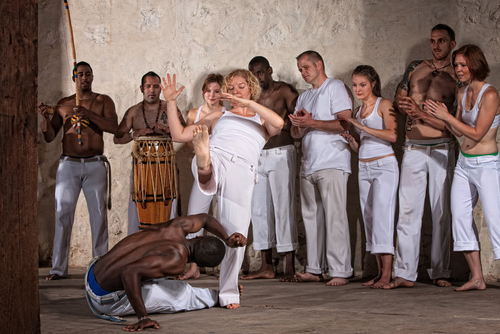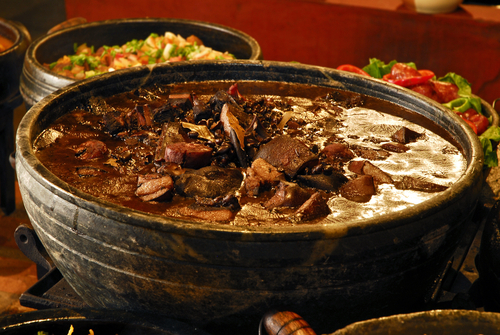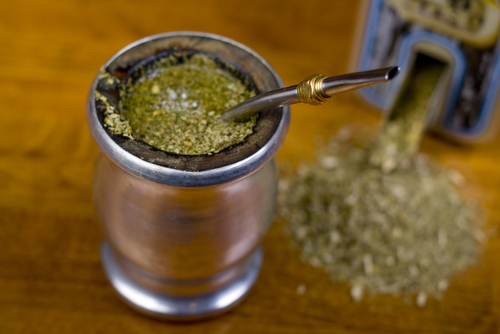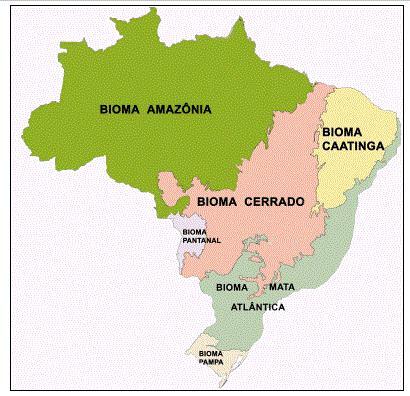Despite the globalization process, which seeks the globalization of geographic space - trying, through of the media, create a homogeneous society - local aspects remain strongly gifts. Culture is one of these aspects: several communities continue to maintain their customs and traditions.
Brazil, due to its large territorial dimension, has a vast cultural diversity. European colonizers, the indigenous population and African slaves were primarily responsible for cultural dissemination in Brazil. Then, Italian, Japanese, German, Arab immigrants, among others, contributed to the cultural diversity of Brazil. Aspects such as cuisine, dances, religion are elements that integrate a people's culture.
Brazilian regions have different cultural peculiarities.
In the Northeast, culture is represented through dances and festivals such as bumba meu boi, maracatu, caboclinhos, carnival, ciranda, coco, reisado, frevo, cavalhada and capoeira. The typical cuisine is represented by sarapatel, buchada de goat, fish and seafood, rice pudding, cornmeal cake stew, cassava dough cake, green corn bread, mush, coconut candy, tapioca, peanut butter, among many others. Northeastern culture is also present in lace crafts.

Capoeira
The Brazilian Midwest has its culture represented by the cavalhadas and the procession of the fire, in the state of Goiás; and cururu in Mato Grosso and Mato Grosso do Sul. The cuisine is of indigenous origin and is strongly influenced by the cuisine of Minas Gerais and São Paulo. The main dishes are: chicken with pequi and guariroba, pie from Goiás, pamonha, angu, cural, fish from the Pantanal – such as the Pintanal, Pacu and Dorado.

Cavalhadas in Pirenópolis (GO)
Do not stop now... There's more after the advertising ;)
The cultural representations in Northern Brazil are in popular festivals such as the Círio de Nazaré and the Parintins festival, the largest boi-bumbá festival in the country. The cuisine has a great indigenous heritage, based on cassava and fish. Dishes such as otacacá, pirarucu de casaca, duck no tucupi, alligator mince and buffalo mozzarella are very popular. Typical fruits are: cupuaçu, bacuri, açaí, taperebá, soursop, buriti.

Parintins Festival (AM)*
In the Southeast, several popular festivals of a religious nature are celebrated in the interior of the region. Feast of the divine, Easter festivities and patron saints, with emphasis on the pilgrimage to Aparecida (SP), congada, cavalhadas in Minas Gerais, bumba meu boi, carnival and cowboy pawn. The cuisine is very diverse, the main dishes are: Minas cheese, cheese bread, tropeiro beans, bean tutu, capixaba moqueca, feijoada, farofa, pirão, etc.

feijoada
The South presents cultural aspects of Portuguese, Spanish and, mainly, German and Italian immigrants. Some cities still celebrate the traditions of ancestors in typical festivals, such as the grape festival (culture Italian) and oktoberfest (German culture), the Portuguese and Spanish-influenced fandango, pau de tape and congada. Cooking includes: barbecue, chimarrão, shrimp, fish mush, roasted teal, barreado (cooked meat in a clay pot) and wine.

chimarrão
––––––––––
*Image credit: Wikimedia Commons / Brazil Agency
By Wagner de Cerqueira and Francisco
Graduated in Geography
Brazil School Team

